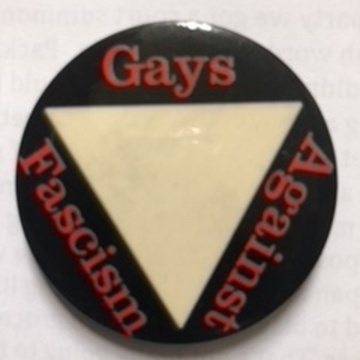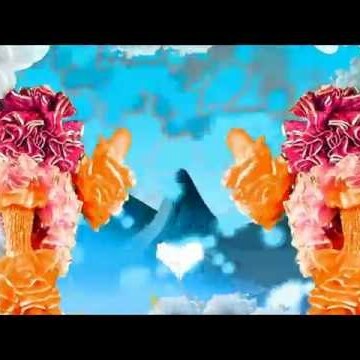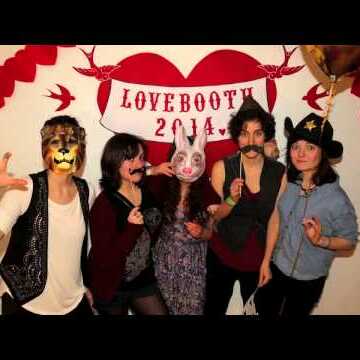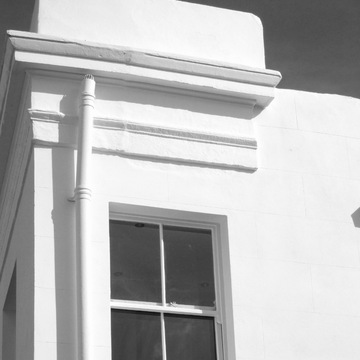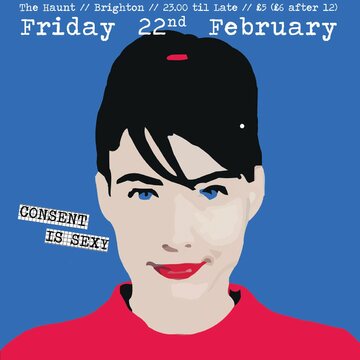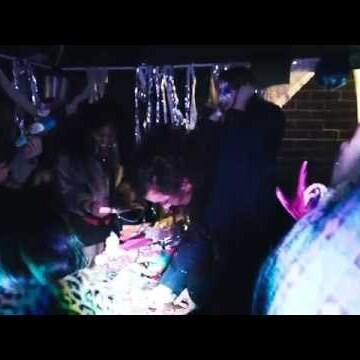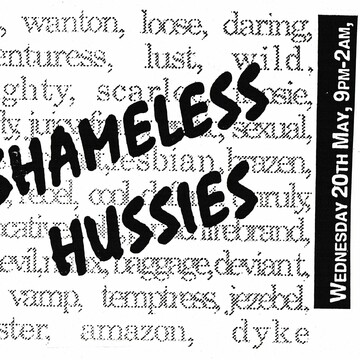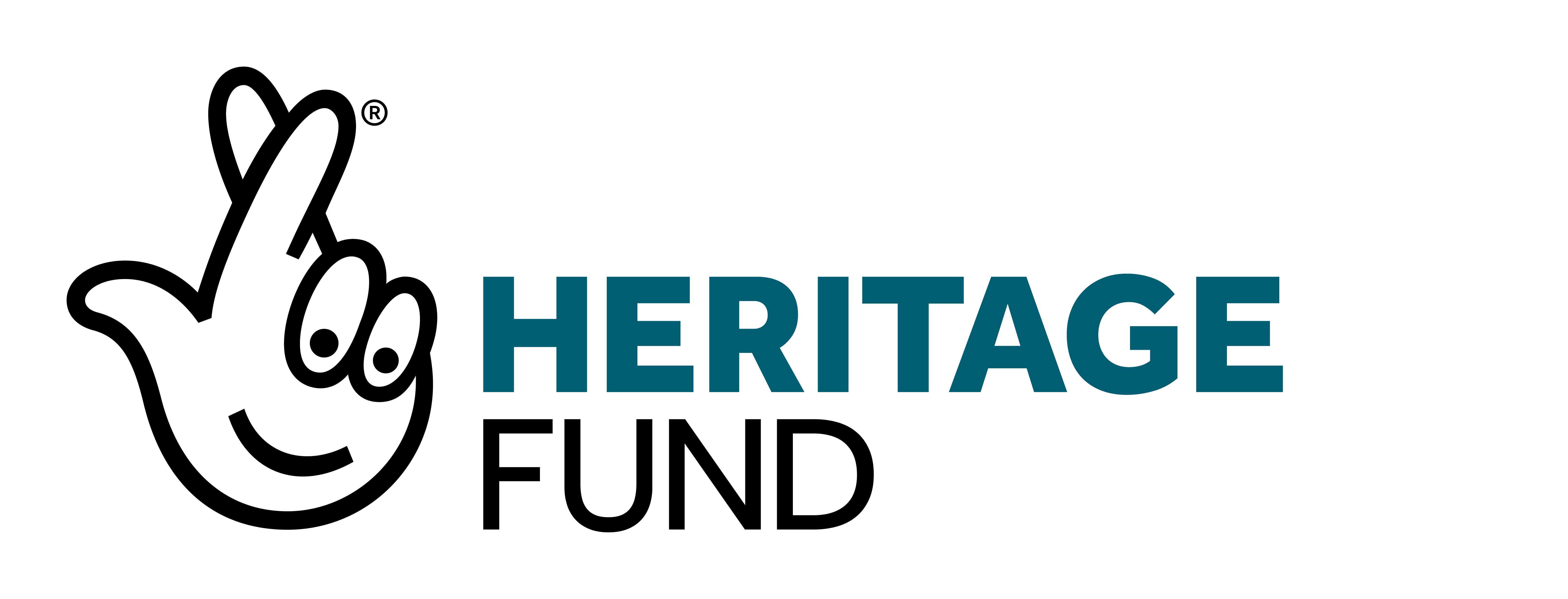Search results
7 items
-
Long ago, when dinosaurs danced to Motown and disco…when discrimination of all kinds was perfectly legal, nobody was listening to us. We had (still do) plenty to say We wanted (still do) to change the world completely. For starters, yes, we wanted equality, but we were dreaming of much more. On top of that there was – sharp intake of breath, oh the shock! – no such thing as social media. No one had profiles, timelines, accounts. So if you wanted to organise a protest or direct action you called the first woman on the telephone tree who then passed the information on to three others who did the same in turn & so on. I say woman because it was mainly women I was involved with, but of course other groups were doing similar things. In the absence of social media, your body, your clothes became your profile statement. Badges, visible on a coat, jacket, jumper defined your tribe, who you were, what you believed in. (T shirts with slogans came later and did the same.) As well as asserting identity, badges were a way of confronting/questioning society (for instance badges that said things like How dare you presume I’m heterosexual? or No to male violence!). There was humour too. As well as wearing badges we fly-posted, scrawled graffiti and defaced billboards subverting capitalist, sexist advertising. One badge for example beautifully reproduced the Coca Cola logo and phrasing to say: Gay love it’s the real thing. Badges were also a way of communicating to like-minded travellers. Two, sometimes three, women's symbols linked together told other women you were a lesbian (or bisexual and/or feminist but certainly open to sisters doing it for themselves). The double-headed axe or labrys, (originally found in Crete, representing Amazons in Greek mythology), was another symbol lesbian feminists could recognise each other by. It worked as code since not everyone knew what it meant. Not all badges were political or feminist. People wore school badges ironically, Captain, Prefect, 1st VII Netball etc. There was a whole cottage industry of badge making. (Along with home-made ones.) Bands promoted their music by producing badges. Deb, my partner, who has always been really cool, has several obscure band badges in her collection. The risks you took wearing your badge/s depended on where you lived. When I visited Poland in the 1980’s I was a lot less brave than when I was walking round Brighton, (or Islington and Hackney). Communism still held Poland in its grip and even forming a women's group was prohibited, (after all there was the Party-run League of Women; anything else was outlawed). Polish Pride badges didn’t come till much, much later. But in the late 1980’s I got given a badge that said Kino Kobiet (Cinema of Women/Women’s Cinema) which I proudly wore in the UK to celebrate my (often invisible) Polishness. I’ll finish this post by telling you a bit more about some badges in my collection which resonate personally for me: I Love Sober Dykes was brought over from the States and given to me by a girlfriend. Alcohol had been a big part of my life. I loved drinking! When I was first coming out it felt scary as hell to acknowledge lesbian feelings. I needed a lot of alcohol in order to approach women I liked or fancied. Also many political meetings took place or ended up in pubs. But in my late twenties I started having some health issues which made me decide to stop drinking. It was very validating to be given this badge. I’d had no idea there might be other women giving up alcohol too and that not drinking could be seen as cool. There has always been that tension between wanting wide and inclusive community (like the present umbrella alphabet of our LGBT+ identities) and wanting to break away to articulate the needs and interests of a particular group. For example now in addition to Pride celebrations there’s Black Pride, more recently Trans Pride. Back in 1977 women who'd been involved with Gay Switchboard and the befriending organisation Icebreakers felt that women's needs weren't being met by those phonelines and decided to set up a separate organisation, Lesbian Line. I went along to their first meeting and joined up. It was an exciting and affirming time, which included Lesbian Strength marches which began in the early 1980’s. We started Lesbian Line in London and then one was also set up in Brighton in the 1980’s. Socials were held in various locations including the Women’s Centre then in St. George’s Street, also in Boyce’s St, off West St. When I moved back to Brighton, I was no longer volunteering for Lesbian Line but enjoyed going to its friendly socials at The Only Alternative Left, a women’s B&B and bar in St. Aubyn’s, Hove run by Monica Crowe. It was a great way of meeting other women. Does Yes I'm homosexual too seem quaint or funny now? At the time I wore that badge (early 1970’s) ‘homosexual’ was a creepy, clinical, already then, old-fashioned word. The sort of word that came up in medical journals discussing our ‘pathology’. You have to remember that until 1973 homosexuality was classed as a mental illness, then as a ‘sexual orientation disturbance’ – and what that carried with it in terms of appalling, demeaning, cruel psychiatric practices… (‘Queer’ at that time was also used very negatively. Both words suggested older men to me, and being older then was considered (still is) pretty unwelcome.) People mistakenly thought ‘homo’ meant man too, whereas in ‘homosexual’ it means same. But also gayness, generally, was seen as something that men did. Women's sexuality, desire - unless obediently heterosexual (today we’d say heteronormative) was hugely invisible. So this badge was a playful flip of the word ‘homosexual’. It was an expression for me not only of solidarity with my gay brothers but a way of simply saying that women could love other women. There are lots more badges I could tell you about, but I’ll just mention one more, last but not least, Gays Against Fascism (circulated in the late 70’s, early 80’s). This badge felt problematic for the reasons I've just mentioned that although some of us used the words ‘lesbian’ and ‘gay’ interchangeably we also felt that as an umbrella word ‘gay’ didn’t make women visible or visible enough. But it was a badge which had (still has) a strong emotional charge for me as well. The image on it is the pink triangle which the Nazis made ‘male homosexuals’, as they would have been known, wear in concentration camps. Later on badges - and jewellery - were also made with the black triangle, which was what women deemed socially deviant, including prostitutes and lesbians, were forced to wear. I can't stress enough how important it felt to me (still does) to link every struggle for what today are called queer rights with wider struggles – whether we were supporting the miners’ strike, fighting for women’s reproductive rights, fighting for disability rights, for the environment or fighting against racism, fighting fascism.
-
Music video for Boogaloo Stu's single 'Bazooka', by Boogaloo Stu and ladypat. "ladypat filmed various takes against a greenscreen, and then added in all of the effects and graphics. The basic premise of this video was 'too much is never enough'! I wore a variety of my wildest costumes, and at the time I was experimenting with unusual headgear; I had an old orange perspex Kartell lampshade upcycled to become a bubble-shaped helmet. I had drilled some additional air-vents in the top of the shade which I then covered up with sequins. The base structure for the helmet was an orange satin 'neck corset' that fitted around my neck, lacing up at the back. The helmet was festooned with sequins and with orange pompoms. Despite the ventilation, it was unbelievably uncomfortable and claustrophobic to wear, which is possibly why it only makes a fleeting appearance in this video - I could only bear to wear it for about 30 seconds at a time."
-
LOVEBOOTH NEW YEAR'S EVE 2013-2014 Video shot and edited by Sharon Kilgannon at Alonglines Photography. The video documents the NYE event which took place at Phoenix Art Gallery.
-
Anthony Luvera is an Australian artist, writer and educator based in London. Anthony collaborated with Queer in Brighton on our first commissioned project ‘Not Going Shopping’ to explore the lives of LGTBQ+ people in Brighton. Anthony invited eleven participants to meet him and bring photographs that told their story, and they were encouraged to consider what being queer means to them, and to photograph their experiences and the things they are interested in. The group met regularly to discuss their work and share photographs, and created self-portraits in a photo booth on the North Laine, which led to discussions about photography and identity. Anthony said of the project: “the prospect of creating this work seemed to me to offer a useful way to further my inquiry into participation and self-representation with groups of marginalized individuals, and at the same time provide an opportunity to confront my own views of queerness as a gay man… Images play a powerful role in the stories we tell about ourselves and the histories told about us. Not Going Shopping expresses the points of view of the participants and myself about what it is to be Queer in Brighton.” This collection of photographs were taken by Edward Whelan, one of the respondents to Anthony's open call for submissions. 1. This photo captures the top window of a house. 2. This photo depicts a group of people making a poster in support of trans people and trans rights. The poster reads "MARCHING FOR THOSE WHO CAN'T. SOLIDARITY WITH TRANS PEOPLE WORLDWIDE"
-
The digital poster for Traumfrau queer party event which took place on the 22nd of February 2013 at The Haunt. The event was a Valentine celebration, celebrating the value of consensual love, over romantic love. "Forget about heart shaped chocolate boxes and Valentine blues... and come celebrate all kinds of (consensual) love with us!" Special guest for this edition: ANNEKA DJs: Mrs Norman Knows: Bedroom Electropop Siouxie Nag: Femtronic, Electronica, Alternative dance
-
Video filmed at Traumfrau queer party event, in collaboration with Pink Fringe, celebrating International Women's Day which took place at The Wagner Hall, on the 7th of March 2015. The video was filmed on the night by videographer Rosie Powell. Performances by Rachel Mars, Krishna Istha, Foxy and Husk, Evan Ifekoya, Susannah Hewlett & Steve Nice. Music by DJ Yes Mel, DJ Bernard L'Hermite (BE).
-
Shameless Hussies women-only lesbian Brighton club night 1992 / 1993 Shameless Hussies was born out of two meetings – some lubricated by herbal tea…others not. A meeting made when this house music-obsessed soul found myself at the Women Only night Venus Rising at the Fridge in Brixton where promoter Teri Murray, Pav, MC DriWeave and DJs’ Queen Maxine, Sista Jean, DJ Louise, Funky G, Smokin Jo, Sister Bliss and Vicki Edwards (oh Vicki Edwards) fed an addiction that would mean 30 years behind the decks. And a meeting where Brighton Pride 1992 saw the group Lesbian Strength, complete with the infamous Lesbus, dental dams and not-so-supportive headlines in the Evening Argus decided to support my idea of a club night in Brighton as part of their fundraising Pride activities. Shout out to Tiz Cartwright, Annie, Mandi, Claire, Amanda, Allie, Jo, Frankie, Dani Ahrens and the many souls involved. Especially Tiz Cartwright – who alongside this house addict wanted to dance to a different tune. Venus Rising was our inspiration and for this wannabe DJ, Club Shame at The Zap its gay blueprint. So we brainstormed and begged. The girls at Venus Rising offered their services for free, advising on promotion and providing DJ Vicki Edwards to play. Bristol’s Rita Lynch was booked. DJ Misbehaviour from Festival Radio and The Escape Club aka Trish agreed to also DJ. Flyers were created as we raided the thesaurus to name our collective adventure – the party now known as Shameless Hussies And on Wednesday 20th May 1992 at Fagans Nightclub, on East Street (home of a bubble tea and chicken shack today) we brought together a bunch of women determined to party with purpose. Quim Magazine had a stall, Lesbian Strength distributed Safer Sex Kits – easily reusable if washed in a gentle solution of bleach and hung on laundry lines. A slide show was provided by local photographer Abigail Dombey. Our first ever banner was created by Heiki Kathoka – an Aussie lesbian my ex Joss Munroe met in Bristol. Oh, the connections we all made. And against the odds it started to work. So smoke machines were hired, slide shows by photographers Del LaGrace Volcano, Tessa Boffin and F. Ryden Lopez were projected, and bed sheets were painted on by banner artists including Melissa Bushill, Lucy Choules, Bee and Liz. Brighton Resource Centre badge machine and photocopier was activated (over and over and over) thanks to the fireball energy of Dani and co, and the streets of Brighton were pummelled as Tiz Cartwright and I started the hard sell. My diaries of the time were filled with the word ‘flying” – not a side hustle or code for a particularly hot date – but the relentless flyering and postering one had to do to get the word out. No social media. No emails, no mobiles. Just photocopies, shoe leather and bits of Blu-tack. We did three parties at Fagans – one party fundraising for The Face magazine’s Lemon Fund – their defence fund in the Jason Donavon libel case who was suing The Face for libel after it said he was gay. And then we moved to The Reform Club on Ship Street, now upstairs at The Walrus where the manager Michael did everything he could to make us feel at home. Shameless had their first theme night –The Safer Sex Party – not as some well thought-out marketing strategy to entice more clubbers but a cheap way of distracting attention from the fact they couldn’t afford big-name DJs and some local enthusiast called KTB was on the decks. The Love Room made its first appearance, a Dark Room at the back of The Reform Club inspired by the gay club scene in San Francisco (very Tales Of The City) but failed miserably as none of us were shameless enough to know what to do in it and couldn’t find our way round in the dark even if we wanted to. And so it began – Tiz and I and our like-minded house music lovers desperate for a space we could call our own. Kate Wildblood February 2024

